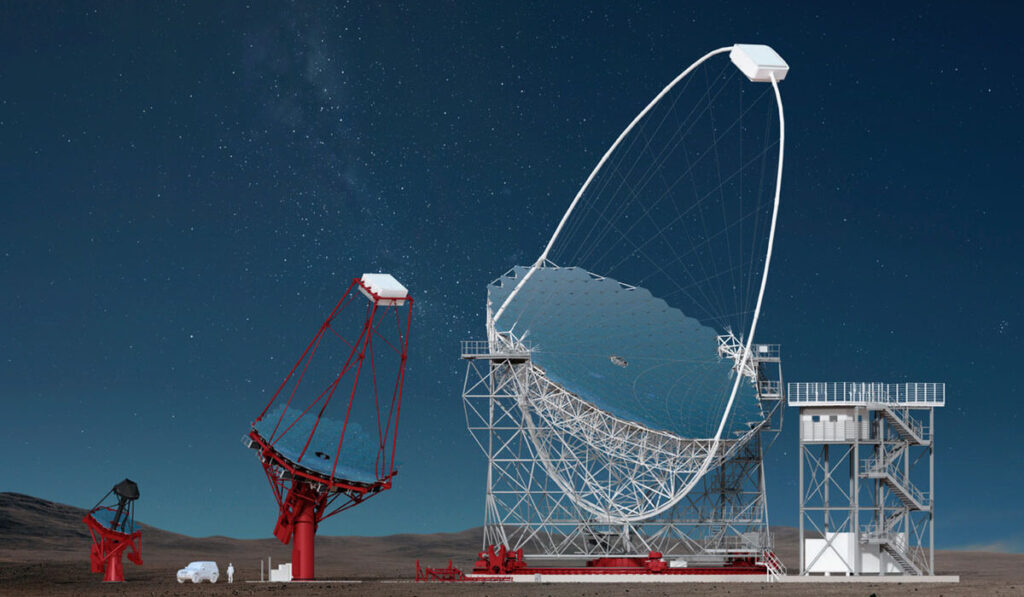A team of WashU researchers and engineers has won a $3.9 million grant from the National Science Foundation to build and install gamma-ray cameras for the Small-Sized Telescopes of the Cherenkov Telescope Array Observatory (CTAO), the smallest of the three classes of telescopes the observatory will deploy. The telescopes are planned for the observatory’s Southern Hemisphere site in Paranal, Chile.
“When the cameras are installed in 2028, the observatory will be the largest and most sensitive high-energy observatory for gamma-ray astronomy in the world,” said Manel Errando, an associate professor of physics in Arts & Sciences who is leading the Washington University in St. Louis team. “This is an exciting opportunity to continue the long tradition of gamma-ray research at WashU.”
The WashU team will contribute the light sensors for 10 cameras of the telescopes as well as the readout and control electronics to operate them. The cameras’ high-speed electronics, designed to record images at a rate of 1 billion per second, will be able to detect gamma rays from cosmic sources such as pulsars, clusters of young stars, the Milky Way’s central black hole and fast jets from giant growing black holes in other galaxies.
The team includes James H. Buckley, a professor of physics; Richard Bose, a senior research engineer in physics; and several other WashU engineers and students. Justin Vandenbroucke, a professor at the University of Wisconsin–Madison, is a co-principal investigator.
